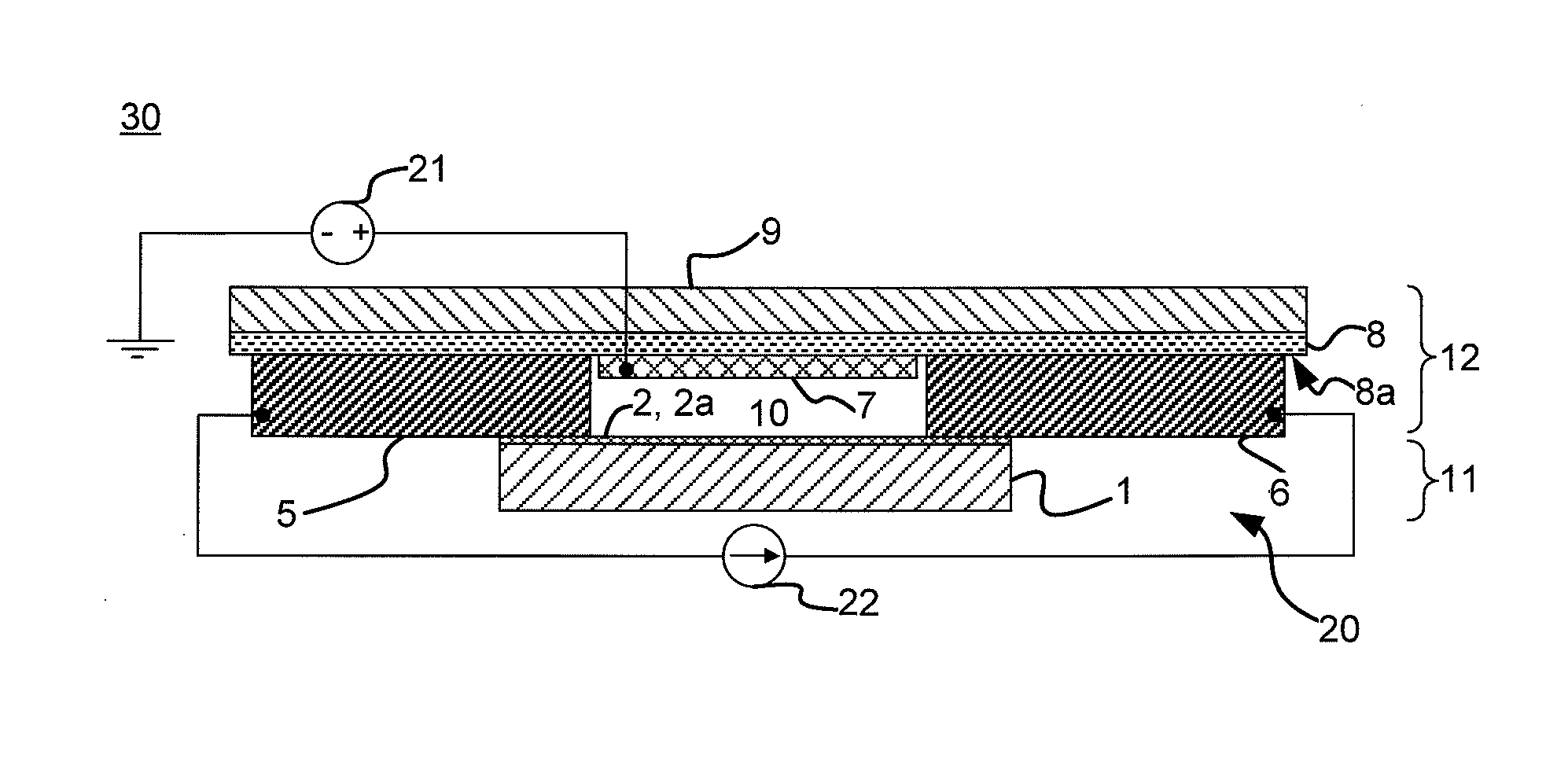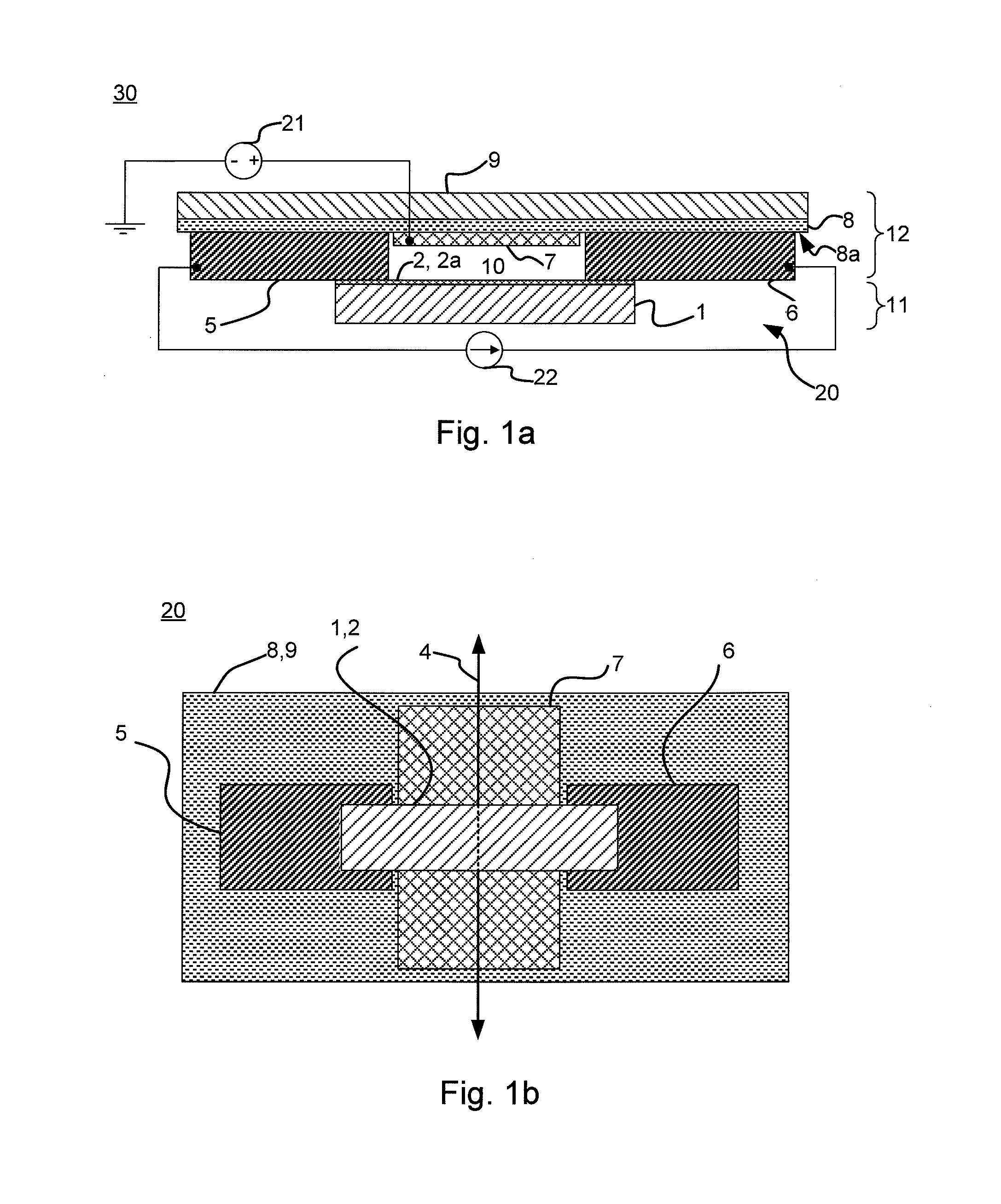Field effect transistor for chemical sensing using graphene, chemical sensor using the transistor and method for producing the transistor
a field effect transistor and chemical sensing technology, applied in the direction of material analysis, measurement devices, instruments by electric/magnetic means, etc., can solve the problems of not being realized as commercial products, risk of damage to the graphene layer, and not being able to achieve the effect of commercial products
- Summary
- Abstract
- Description
- Claims
- Application Information
AI Technical Summary
Benefits of technology
Problems solved by technology
Method used
Image
Examples
Embodiment Construction
[0039]FIG. 1a schematically shows a side view of a field effect transistor 20 for chemical sensing according to a first embodiment and with schematic circuitry biasing the transistor for use as a chemical sensor 30. FIG. 1b schematically shows a bottom view of the field effect transistor 20 shown in FIG. 1a. Said figures display a design example of an air gap field effect gas sensor having a graphene layer supporting substrate 1, an electrically conducting and chemically sensitive channel 2, here formed by a continuous monocrystalline graphene layer 2a, a source electrode 5 in the form of a bonding pad, a drain electrode 6 in the form of a bonding pad, a gate electrode 7 in the form of a bonding pad, an electrically insulating gate substrate layer 8, a gate base substrate 9, and a gap 10. The chemically sensitive conducting channel 2 extends between and is electrically connected to the drain electrode 6 and the source electrode 5. The gate electrode 7 is arranged at a distance from ...
PUM
| Property | Measurement | Unit |
|---|---|---|
| width | aaaaa | aaaaa |
| length | aaaaa | aaaaa |
| height | aaaaa | aaaaa |
Abstract
Description
Claims
Application Information
 Login to View More
Login to View More - R&D
- Intellectual Property
- Life Sciences
- Materials
- Tech Scout
- Unparalleled Data Quality
- Higher Quality Content
- 60% Fewer Hallucinations
Browse by: Latest US Patents, China's latest patents, Technical Efficacy Thesaurus, Application Domain, Technology Topic, Popular Technical Reports.
© 2025 PatSnap. All rights reserved.Legal|Privacy policy|Modern Slavery Act Transparency Statement|Sitemap|About US| Contact US: help@patsnap.com



